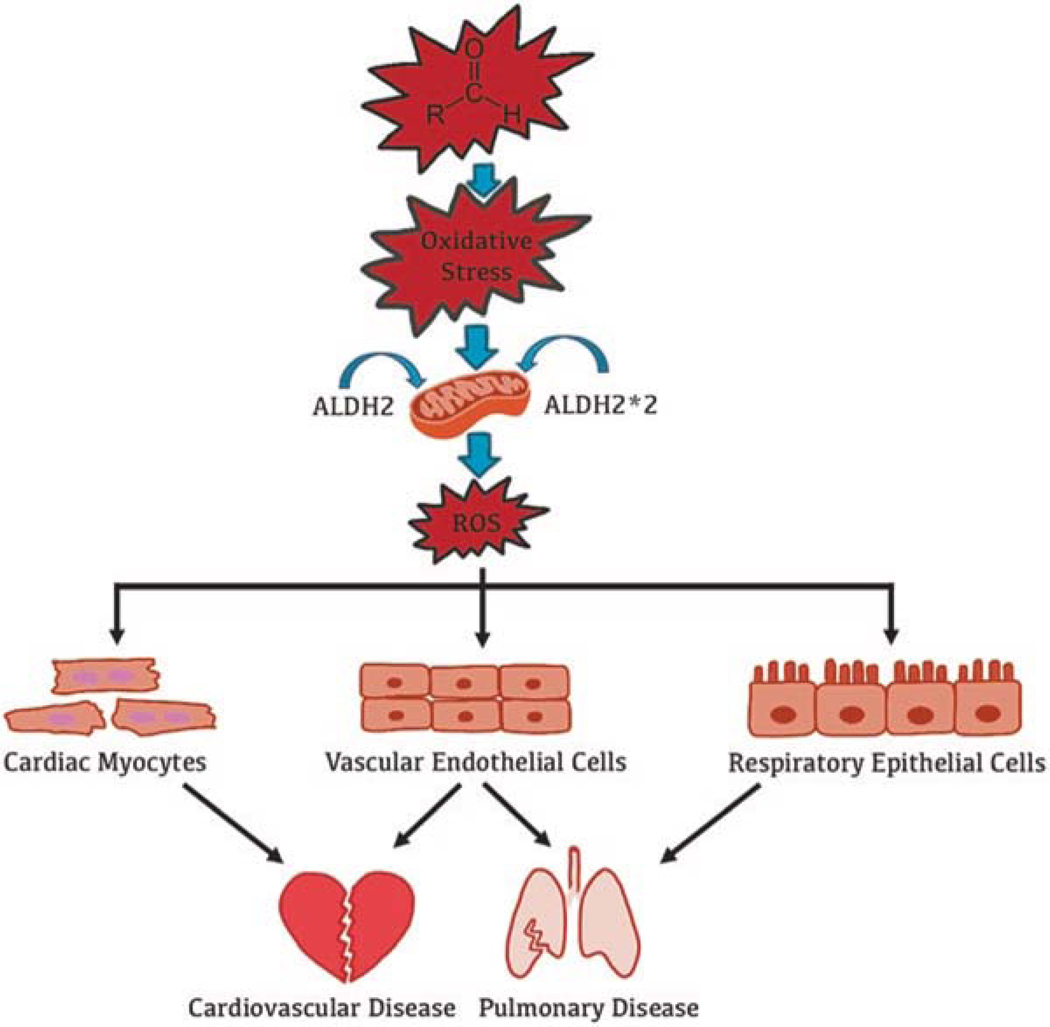Fig. 3.
Schematic representation of how reactive aldehyde exposure harms the cardiopulmonary system. ALDH2 metabolizes toxic reactive aldehydes into a less toxic form. For those with an ALDH2*2 variant, exposure to exogenous reactive aldehydes increases intracellular oxidative stress and impairs mitochondrial function due to an inefficient metabolism of reactive aldehydes. This is followed by an increase in mitochondrial reactive oxygen species (ROS) production. ROS directly affects the structure and function of cardiac myocytes, vascular endothelial cells, and pulmonary epithelial cells, resulting in cellular dysfunction that can ultimately lead to cardiopulmonary disease

